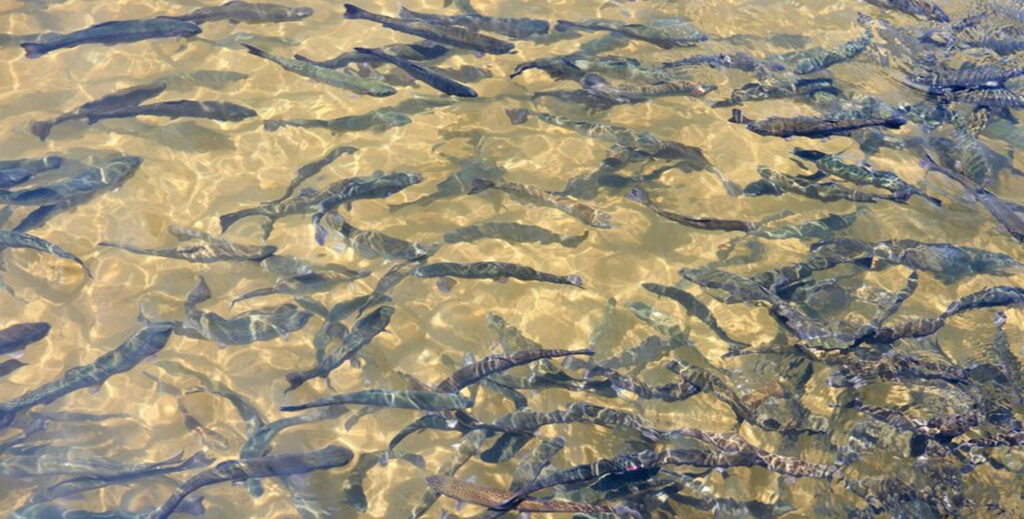Exploring the Fascinating Alligator Gar Skull

Introduction
Welcome to a captivating journey into the world of the Alligator Gar skull, a remarkable aspect of the iconic Alligator Gar fish. In this blog post, we’ll dive deep into the intriguing features of the Alligator Gar’s skull, shedding light on why understanding its structure is so crucial.
Brief Overview of the Alligator Gar Skull
The Alligator Gar (Atractosteus spatula), a prehistoric-looking fish native to North America, is renowned for its unique appearance, especially its long, slender snout, and robust, bony scales. But it’s the skull of this creature that holds particular fascination for researchers, scientists, and enthusiasts alike. This introduction provides a glimpse into the various elements that make up the Alligator Gar’s skull, showcasing its distinctiveness in the world of aquatic life.
Alligator Gar Anatomy: A Closer Look
The Alligator Gar, with its prehistoric appearance and remarkable size, is a true testament to the fascinating world of aquatic life. In this article, we embark on an exploration of the Alligator Gar’s anatomy, focusing on the intriguing details that make it such a captivating species.
The Anatomy Unveiled
1. Scales and Armor
The Alligator Gar is renowned for its tough, armor-like scales. These scales not only serve as a form of protection but also provide buoyancy. Understanding the structure and composition of these scales is crucial in grasping the fish’s unique adaptation to its environment.
2. Long and Slender Snout
The most distinctive feature of the Alligator Gar is its elongated snout, resembling that of its reptilian namesake, the alligator. We delve into the purpose of this snout, its sensory capabilities, and how it aids the gar in its hunt for prey.
3. Remarkable Teeth
The Alligator Gar boasts an impressive set of teeth, sharp and robust. These teeth are designed for capturing, holding, and consuming prey. We take a close look at the arrangement of these teeth and the mechanics behind their formidable bite.
Evolutionary Significance of Alligator Gar Skull
The Alligator Gar has a lineage that stretches back millions of years, making it a living fossil. In this section, we examine the evolutionary journey of this incredible fish and the significant role its skull has played in its survival.
A Glimpse into the Past
We trace the evolutionary history of the Alligator Gar, exploring how it has adapted to changing environments and threats over time. The fossil record provides valuable insights into the remarkable longevity of this species.
The Unchanged Skull
Despite millions of years of evolution, the Alligator Gar’s skull has remained relatively consistent. We discuss the reasons behind this stability and the advantages it offers in terms of survival and adaptation.
The Adaptive Features of Alligator Gar Skull
The Alligator Gar’s skull isn’t just a relic of the past; it’s a masterpiece of natural adaptation. We dive into the specific features of the skull that enable this species to thrive in its aquatic habitat.
Jaw Mechanics
The Alligator Gar’s unique jaw structure allows it to be a formidable predator. We explore how this structure enhances its ability to capture and consume prey.
Sensory Organs
The Alligator Gar relies on a range of sensory organs within its skull to locate and stalk its prey. We examine the sensory adaptations that have made it a successful ambush predator.
Importance of Preserving Alligator Gar Skulls
Understanding the significance of preserving Alligator Gar skulls is essential for both science and conservation efforts. This section highlights the value of these preserved specimens.
Scientific Research
Alligator Gar skulls serve as invaluable resources for scientific study. We discuss how researchers use these skulls to unlock the secrets of this species and gain insights into the broader world of aquatic biology.
Cultural and Educational Importance
These skulls also hold cultural and educational significance, providing opportunities for outreach and learning. We explore how they contribute to our understanding of local history and biodiversity.
Conservation Efforts for Alligator Gar
With the Alligator Gar facing threats from habitat loss and overfishing, conservation efforts are crucial. This section delves into the measures being taken to protect this ancient species.
Habitat Restoration
Conservationists are working to restore and protect the natural habitats of the Alligator Gar. We discuss the importance of maintaining healthy aquatic ecosystems.
Regulations and Awareness
Legal measures and public awareness campaigns are instrumental in safeguarding the gar. We examine the role of regulations and education in its conservation.
Alligator Gar Skulls in Science and Art
Alligator Gar skulls not only contribute to scientific knowledge but also find a place in the world of art and culture. This section showcases the diverse ways in which these skulls are celebrated.
Artistic Representations
The distinctive appearance of the Alligator Gar has inspired artists, and we explore the various art forms that pay homage to this unique fish.
Cultural Significance
We also delve into the cultural significance of the Alligator Gar in the regions where it is found, shedding light on its place in folklore and traditions.
Conclusion
In closing, we reflect on the incredible journey we’ve taken through the world of Alligator Gar anatomy, evolution, and conservation. The Alligator Gar is not just a living fossil but a living testament to the importance of preserving the wonders of the natural world for future generations to discover and appreciate.
More Read:
Exploring the Kristen Archives: A Comprehensive Guide
Comparing Craigslist Ventura California: Which Is Right for You






Responses